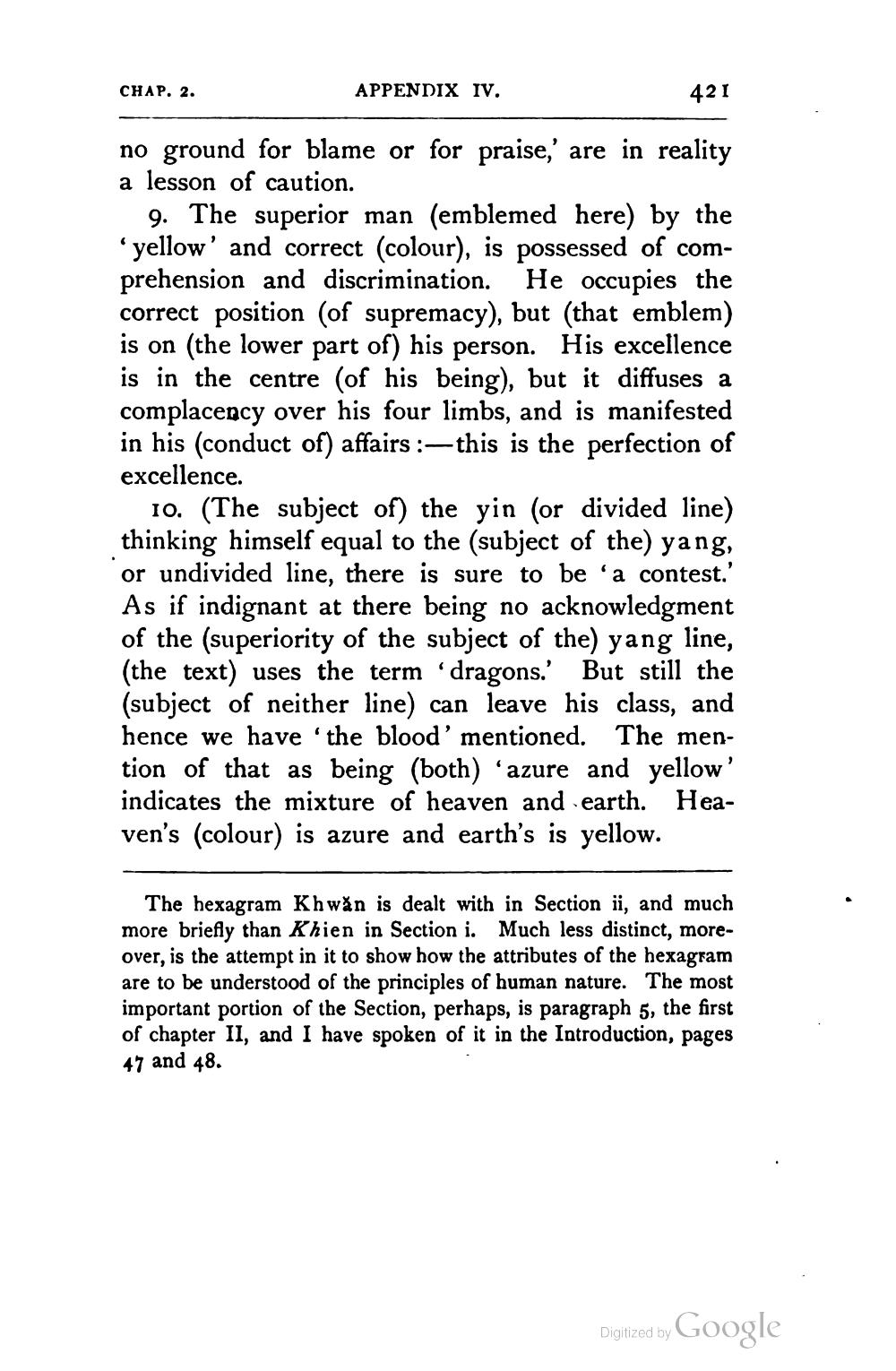________________
CHAP. 2.
APPENDIX IV.
421
no ground for blame or for praise,' are in reality a lesson of caution.
9. The superior man (emblemed here) by the yellow' and correct (colour), is possessed of comprehension and discrimination. He occupies the correct position (of supremacy), but (that emblem) is on (the lower part of) his person. His excellence is in the centre (of his being), but it diffuses a complacency over his four limbs, and is manifested in his (conduct of) affairs :—- this is the perfection of excellence.
10. (The subject of) the yin (or divided line) thinking himself equal to the (subject of the) yang, or undivided line, there is sure to be 'a contest.' As if indignant at there being no acknowledgment of the (superiority of the subject of the) yang line, (the text) uses the term 'dragons. But still the (subject of neither line) can leave his class, and hence we have the blood' mentioned. The mention of that as being (both) 'azure and yellow' indicates the mixture of heaven and earth. Heaven's (colour) is azure and earth’s is yellow.
The hexagram Khwăn is dealt with in Section ii, and much more briefly than Khien in Section i. Much less distinct, moreover, is the attempt in it to show how the attributes of the hexagram are to be understood of the principles of human nature. The most important portion of the Section, perhaps, is paragraph 5, the first of chapter II, and I have spoken of it in the Introduction, pages 47 and 48.
Digitized by Google




